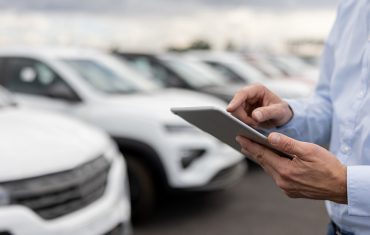
What we mean when we say ‘mobility’
For your fleetMobility. It has come to mean so many different things in this digital age.
From physical mobility (the mobility of our bodies) to social mobility (the movement between social strata or classes) to technological mobility (the ability to move across different tech platforms or environments) to job mobility (the movement of employees across positions and occupations). Your relationship with the word ‘mobility’ is likely to be affected by how you use it most it in your daily activities.
For those managing fleets or responsible for keeping a business moving, ‘mobility’ largely means transport-based mobility – how your people and goods move within cities and towns. And it’s changing the way we all do business. Rapidly.

With this change comes a re-assessment of the infrastructure in place to support new forms of transport mobility. This includes public transport systems, community resources like footpaths and bike paths, and road networks (for example, when traffic lights and vehicles are networked, traffic not only runs faster and more smoothly but there is an enormous potential to reduce CO2 emissions).
The ways in which we move people, goods and services around our cities, towns and suburbs have been redefined to such an extent that, before too long, the term ‘vehicle fleet’ – as we have traditionally used it – may very well become redundant.

The changing face of mobility and transport
There are many factors contributing to the growth in mobility options globally. McKinsey researchers believe that “Within the next decade… the mobility ecosystem will most likely undergo a transformation not seen since the early days of the automobile—and one main shift will be the decline of private-car use. Governments are already enacting regulations to reduce the number of vehicles on the road to ease congestion and reduce emissions, and consumers are also voicing preferences for more efficient, green, and convenient transportation options.”
In Australia and NZ, as our major cities grow and the proliferation of high-density apartment buildings continues, the resulting traffic congestion and shortage of parking options have seen a rise in mobility alternatives like ride-sharing or eScooter hire.
These alternatives are far more convenient and affordable when measured against the cost of owning and maintaining a car, especially if your apartment title or lease doesn’t provide a parking space.

Environmental concerns are also driving the increasing types of modern mobility. With cars and trucks among the major contributors to rising CO2 emissions, more and more people are looking for ‘greener’ ways of travelling including public transport, eBikes or carpooling. For many businesses, switching to cars and trucks powered by alternative energy sources has become necessary as fuel prices continue to increase.
Fewer Millennials and Gen Ys are purchasing cars, preferring to subscribe instead to Mobility as a Service (MaaS) (see pp 19-25) because of the costs, convenience, and ease of access. Given most MaaS platforms using smartphone-based apps, the seamless user experience is also a major attraction for more tech-savvy travellers and commuters.
All these factors are influencing the way your business needs to approach transportation.

Mobility and transportation in business
As businesses adjust to the evolving definition of transport mobility, along with demands from their employees to keep pace, new workplace approaches arise.
Rather than assign a motor vehicle to an employee, mobility budgets are gaining in popularity, which covers employee costs for the use of sustainable transport options – from eBikes and even eScooters to forms of shared mobility (such as car sharing and pooling) to taxis and public transport like buses and trains.
Shared mobility is now also being used for the movement of commercial goods, not just people. An Australian example is Bowens recent partnership with Uber for making on-demand 90-minute hardware deliveries to tradespeople and builders.
Similarly, last-mile delivery – the final leg of a product’s journey for getting goods to the customer’s front door – is relying more and more on micromobility modes, such as eBikes, to overcome traffic congestion and time delays. Services like DoorDash and Amazon Flex (not to mention Uber partnering with Coles) are reducing the need for companies to have their own fleet of vehicles to move goods.
Digital initiatives are seeing enhanced logistics across the supply chain, such as connected vehicles (i.e. vehicles continuously connected to the internet or GPS tracking for better monitoring of delivery, safety, vehicle performance, maintenance and so forth). Technological advances – electric and alternative powertrains, connected vehicles, and even autonomous driving – are shaping a new business ecosystem.
It’s fair to say that transport-based mobility is impacting the way we think of fleets.

In conclusion
Mobility can mean many things, But for those involved in the movement of goods and people, it refers to a completely new approach to doing things – a rethink of former practices.
Whether your fleet is two, 20 or 200 vehicles, you need to keep an open mind about what a ‘fleet’ might look like in the near future.
Employees are increasingly becoming less reliant on vehicles to move from point A to point B. Similarly, there are a growing number of services that make it faster and more efficient to move goods and services from your distribution centre, processing centre or factory floor to your customers or clients.
The question becomes, do you need to manage a fleet the traditional way anymore? It’s a big decision, but with today’s options, it’s time to review your plans.
Talk to SG Fleet about bringing your fleet into a new age of mobility.
Be the change you want to be
 Driving Insights
Driving Insights




